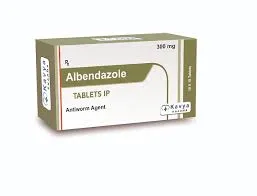- Afrikaans
- Albanian
- Amharic
- Arabic
- Armenian
- Azerbaijani
- Basque
- Belarusian
- Bengali
- Bosnian
- Bulgarian
- Catalan
- Cebuano
- Corsican
- Croatian
- Czech
- Danish
- Dutch
- English
- Esperanto
- Estonian
- Finnish
- French
- Frisian
- Galician
- Georgian
- German
- Greek
- Gujarati
- Haitian Creole
- hausa
- hawaiian
- Hebrew
- Hindi
- Miao
- Hungarian
- Icelandic
- igbo
- Indonesian
- irish
- Italian
- Japanese
- Javanese
- Kannada
- kazakh
- Khmer
- Rwandese
- Korean
- Kurdish
- Kyrgyz
- Lao
- Latin
- Latvian
- Lithuanian
- Luxembourgish
- Macedonian
- Malgashi
- Malay
- Malayalam
- Maltese
- Maori
- Marathi
- Mongolian
- Myanmar
- Nepali
- Norwegian
- Norwegian
- Occitan
- Pashto
- Persian
- Polish
- Portuguese
- Punjabi
- Romanian
- Russian
- Samoan
- Scottish Gaelic
- Serbian
- Sesotho
- Shona
- Sindhi
- Sinhala
- Slovak
- Slovenian
- Somali
- Spanish
- Sundanese
- Swahili
- Swedish
- Tagalog
- Tajik
- Tamil
- Tatar
- Telugu
- Thai
- Turkish
- Turkmen
- Ukrainian
- Urdu
- Uighur
- Uzbek
- Vietnamese
- Welsh
- Bantu
- Yiddish
- Yoruba
- Zulu
10 月 . 15, 2024 09:43 Back to list
Oxytetracycline Injection for Veterinary Use in Animal Health Management and Treatment
The Application of Oxytetracycline Injection in Veterinary Medicine
Oxytetracycline is a broad-spectrum antibiotic belonging to the tetracycline class, widely used in veterinary medicine. This medication plays a crucial role in treating various bacterial infections in animals. Its versatility, efficacy, and relatively low cost have made it a staple in veterinary practices worldwide.
Mechanism of Action
Oxytetracycline works by inhibiting bacterial protein synthesis. It binds to the 30S ribosomal subunit, preventing the attachment of aminoacyl-tRNA to the ribosomal mRNA complex. This binding action interrupts the translation process, effectively halting bacterial growth and reproduction. Consequently, oxytetracycline is effective against a wide range of gram-positive and gram-negative bacteria, making it a go-to treatment option for various infections.
Indications in Veterinary Usage
Veterinarians prescribe oxytetracycline for a variety of conditions. It is commonly used to treat respiratory infections, urinary tract infections, and skin infections in livestock and pets. For instance, in cattle, it is frequently administered to manage infectious bovine keratoconjunctivitis, commonly known as pink eye. It is also effective against certain types of bacterial pneumonia in both large and small animals.
In addition, oxytetracycline is used in the treatment of mycoplasma infections, which are particularly challenging due to their unique cell structure that makes them resistant to many antibiotics
. It is often included in the therapeutic protocols for swine and poultry to prevent and control diseases caused by these pathogens.oxytetracycline injection veterinary

Dosage and Administration
Oxytetracycline is typically administered via injection, either intramuscularly or intravenously. The dosage varies based on the species of animal, the severity of the infection, and the form of the drug used. Veterinarians must carefully calculate the correct dose to avoid unnecessary side effects and ensure the effectiveness of the treatment. Overdosing can lead to complications such as kidney damage and gastrointestinal disturbances.
Considerations and Side Effects
While oxytetracycline has proven to be effective, it is not without potential side effects. Commonly reported adverse effects include nausea, vomiting, and diarrhea. In some cases, prolonged use may lead to the development of antibiotic-resistant bacteria, which poses a significant challenge in veterinary medicine. Therefore, it is crucial for veterinarians to use this antibiotic judiciously, following appropriate guidelines and protocols to minimize resistance development.
Moreover, oxytetracycline can cause discoloration of teeth and may affect bone growth when used in young animals, particularly puppies and kittens. Hence, its use in this demographic should be approached with caution and it is generally avoided unless absolutely necessary.
Conclusion
In summary, oxytetracycline injection serves as a vital tool in veterinary medicine for combating various bacterial infections in animals. Its broad-spectrum efficacy allows veterinarians to treat a wide range of conditions, providing relief for both livestock and companion animals. However, responsible use is critical to minimize the risks of side effects and antibiotic resistance. As veterinary practices continue to evolve, oxytetracycline remains a key antibiotic in ensuring the health and well-being of animals, debunking the myth of being a mere relic of the past. The future of veterinary medicine will undoubtedly see ongoing research into optimizing the use of this antibiotic, ensuring it remains a cornerstone for infection management in animals.
-
The Power of Radix Isatidis Extract for Your Health and Wellness
NewsOct.29,2024
-
Neomycin Sulfate Soluble Powder: A Versatile Solution for Pet Health
NewsOct.29,2024
-
Lincomycin Hydrochloride Soluble Powder – The Essential Solution
NewsOct.29,2024
-
Garamycin Gentamicin Sulfate for Effective Infection Control
NewsOct.29,2024
-
Doxycycline Hyclate Soluble Powder: Your Antibiotic Needs
NewsOct.29,2024
-
Tilmicosin Premix: The Ultimate Solution for Poultry Health
NewsOct.29,2024













